You have read about 13 urban legends of Southeast Asia, now sit back for another round!
Yes, it is I who has returned yet again to serve you the good stuff. Southeast Asia is a fascinating region for sure. But as I entered deeper into the urban legend rabbit hole, the temptation of uncovering the untapped potential of Japanese horror was too much.
So without further ado, let’s delve into the list of Japanese urban legends that absolutely terrified me just reading about it.
Disclaimer: Some readers may find the following images disturbing, so scroll through at your own discretion.
1. Kuchisake-onna

If you have not heard of kuchisake-onna in Japanese urban legends, you might wanna pay some attention especially if you’re a fan of taking night walks.
Most notable for the deep bloody gash that stretches across her face from ear to ear, the kuchisake-onna is a vengeful spirit who was mutilated to death by her husband when he found out about her affair.
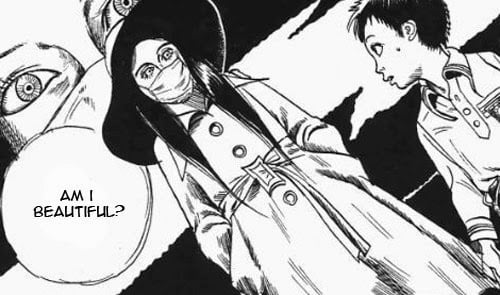
Appearing to innocent passersby with half of her face covered, she will proceed to ask, “Am I beautiful?” to the unlucky soul. Should the victim respond with yes, kuchisake-onna would reveal her grisly wound of a grin and then ask, “What about now?”.
(Oh yeah, way to put someone on the spot.)

If the victim answers no or screams in fear, she will slash them and inflict the same wound on them as a reflection of her own mutilation. But if the victim answers yes a second time, she will walk away but follow them home to kill them.
Best to practise your responses for this one, folks.
2. Nure-onna

Hanging out near sea shores and river banks, the nure-onna is a sea serpent creature that has vampiric tendencies. She is always soaking wet and has long black hair that sticks to her dripping body.
They have a feminine appearance but with hideous faces and forked tongues, like a serpent. To deceive their victims, the nure-onna would disguise themselves as distressed women holding a young baby and plead for help. Should the victims fall for that, she would implore them to help hold her baby for a while as she rested.
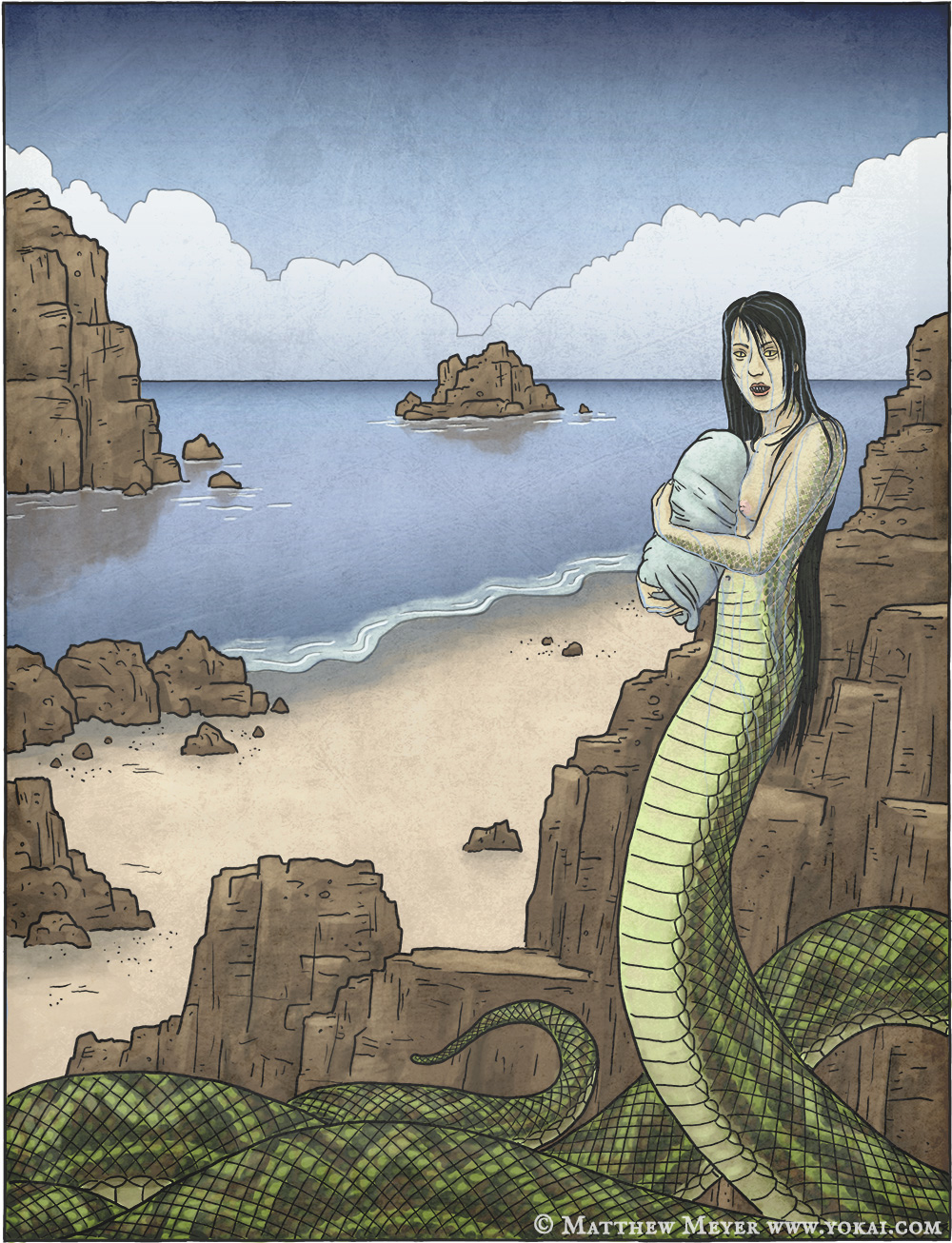
Soon, the victims will realise that the “baby” would be as heavy as a boulder, and the nure-onna would seize this chance to feed on the victim’s blood while they are unable to move.
Somehow, it seems like it’s always the good samaritans that get tricked and fed upon.
3. Futakuchi-onna
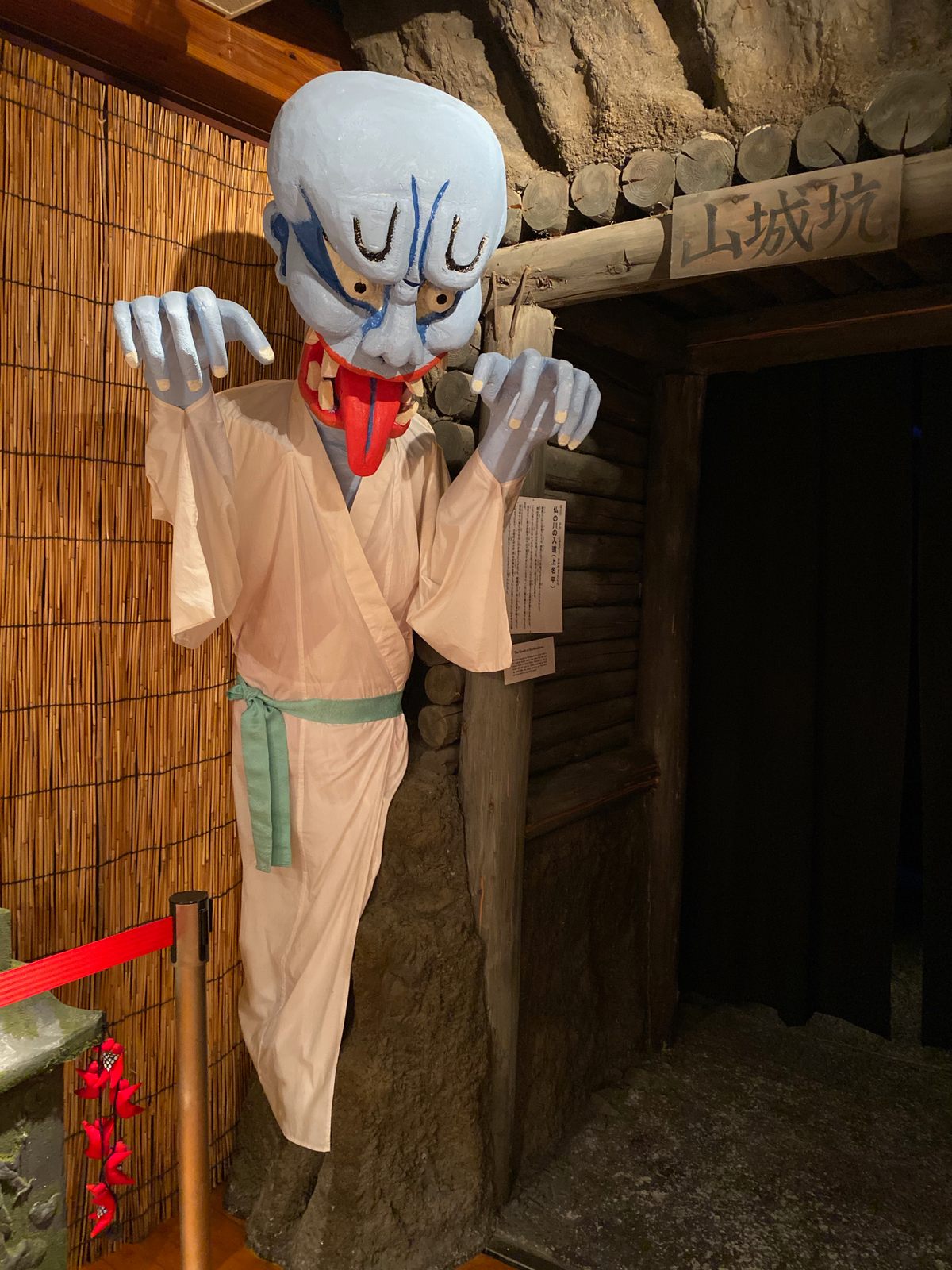
Thought to be shapechangers, the futakuchi-onna are yokais (a class of supernatural entities and creatures in Japanese urban legends) who are used as a punishment on people because of their wickedness or extreme unwillingness to spend money.
Passing off as a normal woman at first glance, the futakuchi-onna’s insidious appearance lies under her dark hair when she lifts it to reveal a second mouth with sharp teeth and fat lips. This second mouth is a greedy sucker that ravages on any sort of food it may come across.

One story goes that this wicked stepmother who always gave enough to her daughter but never her stepdaughter (like okay, Cinderella much?). Inevitably, the stepdaughter died of starvation and not long after, the stepmother was punished by having the second mouth appear on her head that would wail in the voice of her dead stepdaughter, effectively turning her into a futakuchi-onna.
She was cursed to feel the hunger pangs of her stepdaughter if the second mouth was not fed enough. From then on, the stepmother made sure to feed both mouths.
That’s a much more satisfying ending than the Disney version one, in my opinion. Justice is served with the futakuchi-onna!
4. Hanako-chan
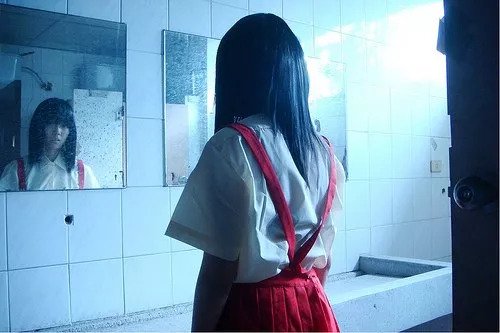
Ask any Japanese person and they are sure to know the tragically horrifying story of Hanako-chan. This Japanese urban legend has different versions to its tale, such as Hanako-chan being the ghost of a girl who was murdered while playing hide-and-seek during a World War II air raid, a victim of a plane crash, or even that of a successful suicide.

But the main gist of this Japanese urban legend is that Hanako-chan resides in the third stall of the female bathroom. In order to summon her, one must walk into the female bathroom and knock thrice on the third stall, asking if she is there.
Hanako-chan might give some variation of acknowledgment to the summoner. Depending on the version, the summoner might be dragged away to hell by Hanako-chan herself, or become the meal for a three-headed lizard.

The tale of Hanako-chan is so famous that it proliferated in popular culture, inspiring many films and even a manga called Toilet-Bound Hanako-kun.
Come to think of it, maybe Hanako-chan wants to make friends whenever someone knocks on her door but gets frustrated whenever they scream after her response…
5. Okiku doll

Get a load of this butterfly effect: the year is 1918. A young boy saw a doll in a shop and decided to buy it for his sister. This resulted in the birth of one of the most haunted dolls to exist, now put on display in a temple in Japan.
Okiku doll was named after her owner, Okiku, who loved her very much and carried her around all the time. Unfortunately, the human Okiku died only at 3 years old from yellow fever. The devastation of this tragedy made her family put the Okiku doll by their daughter’s altar so as to remember her.

To their shock and surprise, the hair of the Okiku doll — with a length that was just touching the shoulders — started to grow the way a human does. Family members started dreaming of Okiku and waking up to find the Okiku doll by their bedside. And it was also around this time where paranormal activities such as lights flickering started to happen.
Although it took a while to get used to it, eventually the family got used to the paranormal activity and even attributed it to Okiku visiting them from beyond the grave.

Today, the Okiku doll is being displayed at a private local shrine at Mannen-ji Temple in Hokkaido, Japan, beckoning the fearless and adventurous who dare to catch a glimpse of her. If you are lucky, you might catch a glimpse of priests trimming and maintaining her hair length as it continues to grow almost as if the Okiku doll is a human.
Do you think she is in need of a trip to the salon? I mean come to think of it, 1918 was a long time ago.
6. Teke Teke

Remember the manananggal, who flies around with only her upper torso and is a fan of kway chap? The teke teke of Japanese urban legends is eerily similar, except she doesn’t fly and has probably never heard of kway chap.
The teke teke is named as such because of the sound it makes when it is crawling around on the ground with only its arms and hands.
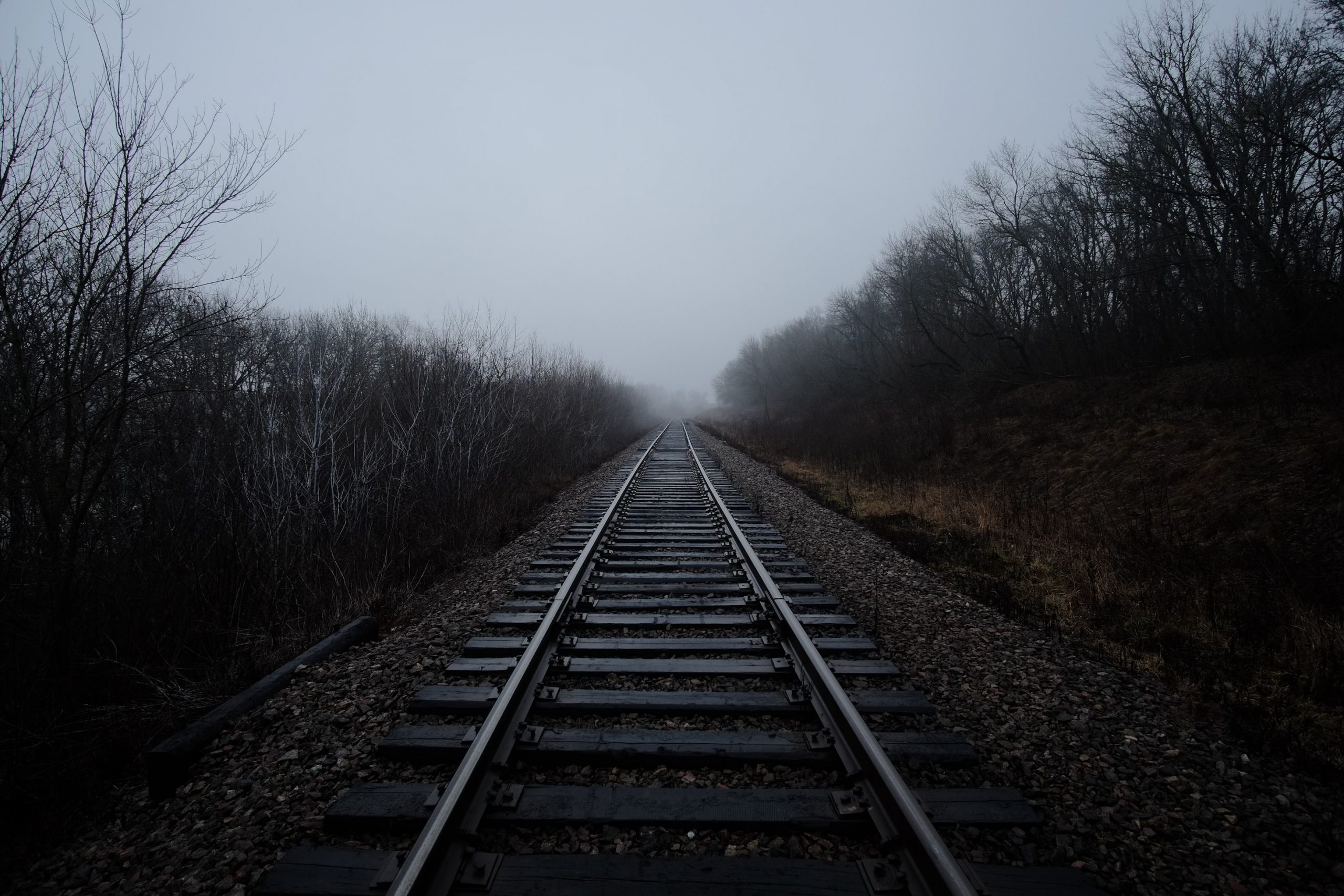
Legend goes that the teke teke was once an office worker during the years after World War II who was sexually assaulted by an American military personnel. Overwhelmed, she threw herself off a bridge onto railroad tracks but was hit by an oncoming tracks. The impact was so forceful that it split her body from the waist.
Due to the extreme cold, it was not a quick death and she tried her best to squiggle and worm herself — or what was left of herself —- to seek help before she eventually died an agonising death.

It is said that the teke teke can travel at extreme speeds and appears in urban areas around roads to look for victims before using a sickle to cut their bodies in half and stealing their legs.
Treat this as a lesson to not judge someone’s speed by their size.
7. Rokurokubi: long neck woman

The rokurokubi are said to be yokai who look like ordinary human women but what makes them stand out is that when they are asleep, they are able to elongate their necks to unlimited lengths and roam freely as a floating head.
People who get cursed and turn into a rokurokubi are said to have been punished for some bad deeds they did, or something that their husbands and/or fathers did.

One of the Japanese urban legends goes like this: a monk eloped with a young lady named Oyotsu but when she got sick, the monk murdered her because treating Oyotsu would make them lose all their travel money.

One night, the monk stayed at an inn and in the middle of the night he was awakened. Upon opening his eyes, he saw the face of Oyotsu attached to an elongated neck and angrily accused him of anger. Frightened, the monk rejoined his temple soon after and built a grave for Oyotsu, praying for her soul every day.
I suppose the real horror here is the guilt of one’s own sins.
8. Gashadokuro

Megalophobia is a very real thing, and people who are terrified of gargantuan things should take note of this next one.
Gashadokuros are giant skeletons that wander around the countryside at night. Their teeth and bones make a chattering rattle sound that goes “gachi gachi” which gives rise to their namesake.

However it is not all smooth sailing and cute sounding. If they happen to chance upon a human walking alone at night, the gashadokuro will sneak up on their victims and crush them in their hands or bite their heads off.
They are said to be soldiers and victims of famine who died in fields without proper funeral rites and burials, turned into gashadokuros and being salty at the living for, well, being alive.
This one sounds pretty familiar, don’t you think, Attack on Titan fans?
9. Yuki-onna
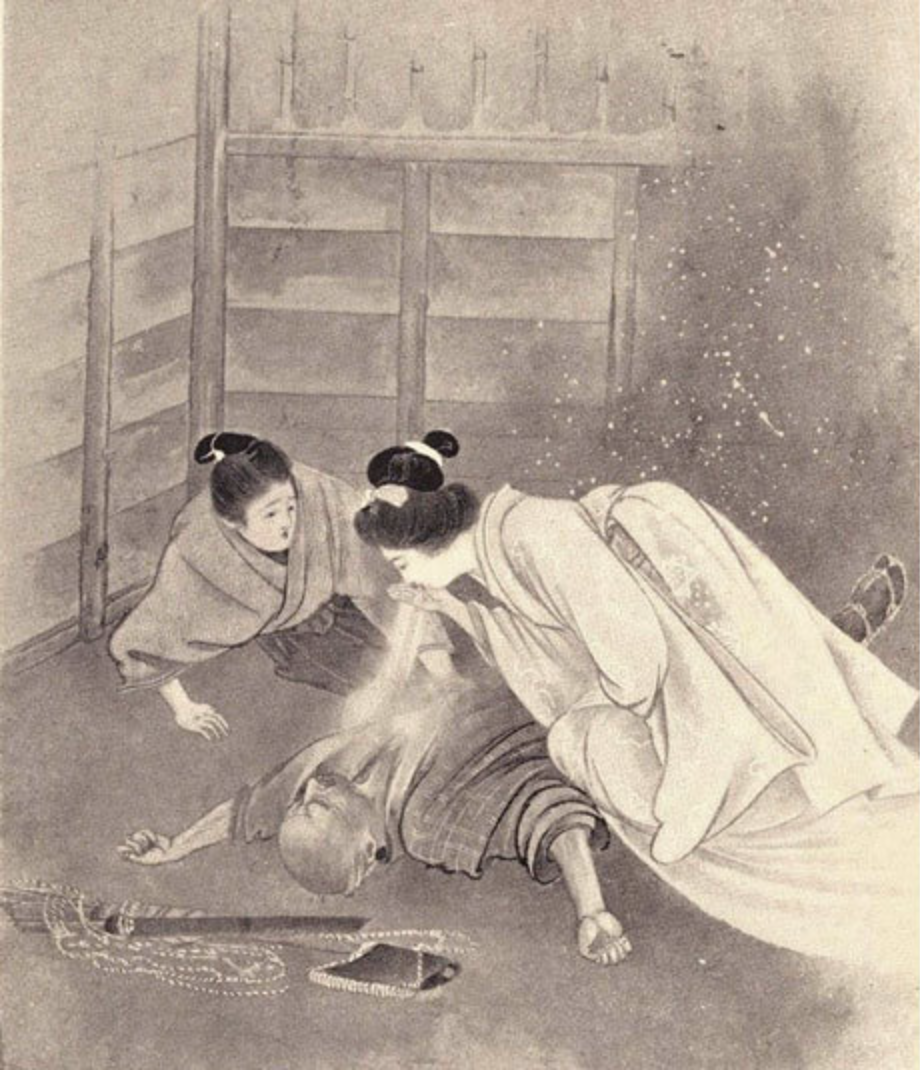
Do not be fooled by their ethereal beauty and fair-as-snow skin, as the yuki-onna spends its lives lingering around the snowy mountains of the Japanese Alps to hunt humans. Their preferred modus operandi of killing is to suck the life force of their victims with an icy breath, effectively freezing them.
It was said that once in the Niigata Prefecture, there was an elderly innkeeper with his wife who operated an inn on a mountain trail. On a snowy night, a young and beautiful woman stopped by the inn. She was polite and charming, with an incredible beauty, and even dined with the elderly innkeeper and his wife.

However things took a strange turn when the young woman decided to up and leave in the middle of the night when a fierce blizzard was happening. The elderly innkeeper attempted to stop her from leaving by grabbing her hand, only to find her as cold as ice. As he tried several ways to keep the young woman in the house, her entire body suddenly turned into ice mist, and she shot up from the chimney and out into the night.
Remember the hantu tetek and how some people might not mind an ending at the hands of her? Perhaps the yuki-onna is next on that list…
10. Nopperabo
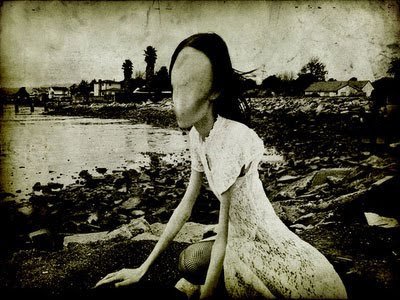
From the back, the nopperabo resembles any ordinary human being you might encounter on the street. Directly translated to ‘faceless monk’, the real horror one gets is when they attempt to talk to the nopperabo only to find them faceless.
Usually encountered on quiet and empty streets and walkways at night, the nopperabo can be called as one of the practical jokers of the yokai as they don’t really feast on humans (because they don’t have a mouth, haha) but rather take joy from actively scaring unknowing passersby.
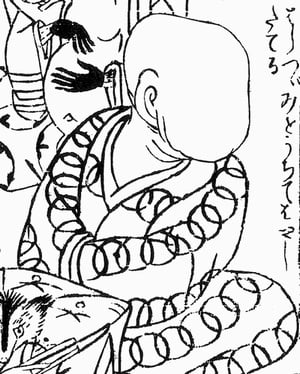
The nopperabo often work together in groups to inflict terror on one individual. As their victim runs away in panic from the first nopperabo, he will run into another person who will ask him what’s wrong and the victim will frantically explain what he just saw.
Surprise, surprise, it is the second nopperabo, who will go “Oh, you mean like this?” and proceed to ‘wipe’ his face away to reveal the facelessness underneath it. And this cycle repeats, sometimes even with the victim’s close friends and family members.
Talk about a Groundhog Day experience. Even if it doesn’t eat humans, this experience is terrifying enough for me. Nopperabo? More like nope-rabo…
11. Aka Manto

Aka manto is one of the more popular Japanese urban legends, and dating even further back from Hanako-chan. Like Hanako-chan, the aka manto is a fan of lurking in toilets and getting its unsuspecting victims from there.
The poor victim — usually a student — will find themselves out of toilet paper after doing their business, and a strange voice will ask, “Do you want red paper or blue paper?”. Upon answering “red paper”, the student will be stabbed and sliced up so violently that they look like they are wearing a red cloak. The other option of “blue paper” is no better. All of the student’s blood is sucked out of their body, leaving them dead and blue-faced on the floor.
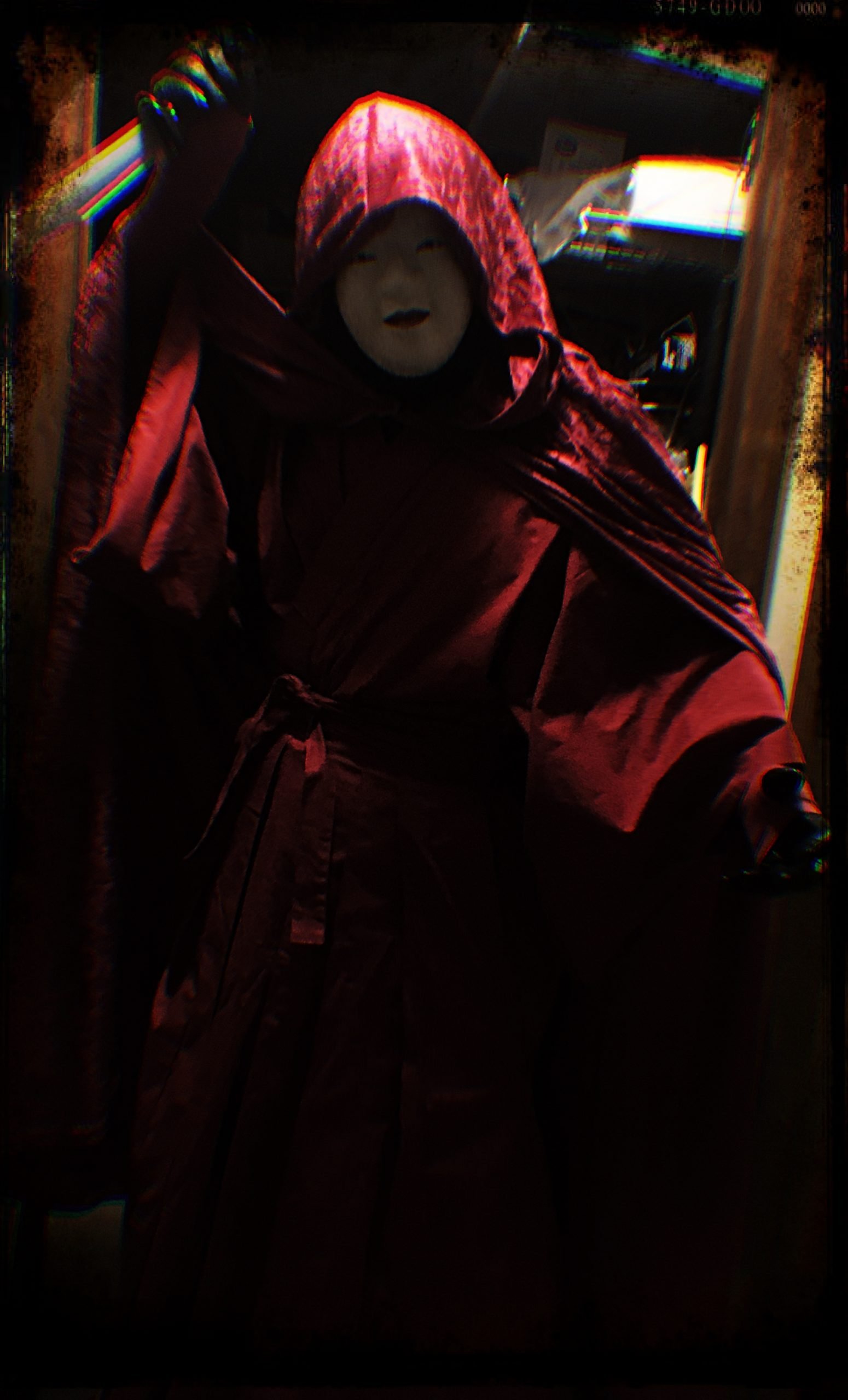
Like most Japanese urban legends, there really isn’t any “correct” answer to these questions. There have been accounts of daredevils not answering the question at all, which buys them enough time to run away from death.
If Hanako-chan wants friends, then maybe aka manto just wanted to be helpful. Hanging around in the bathroom all day does not sound like fun.
12. Kawahime
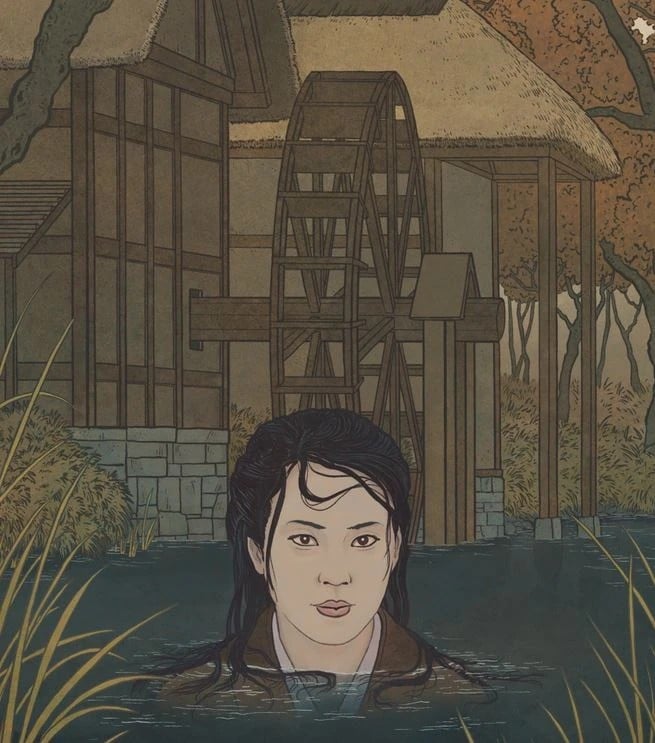
Kawahime are said to be the water cousins of the yuki-onna, but instead of snowy places they prefer to lurk underwater in structures like bridges along rivers.

Said to be river princesses, their appearance looks like beautiful human women and they lie in wait underwater for young men to approach the bridge or the riverbank. When they come close, the kawahime will emerge and bewitch him, making him fall completely in love with her before draining him of his life force.
Bewitching and then sucking one’s life force? Oh yeah, I’ve definitely seen a kawahime before. It’s my ex.
13. Yamauba
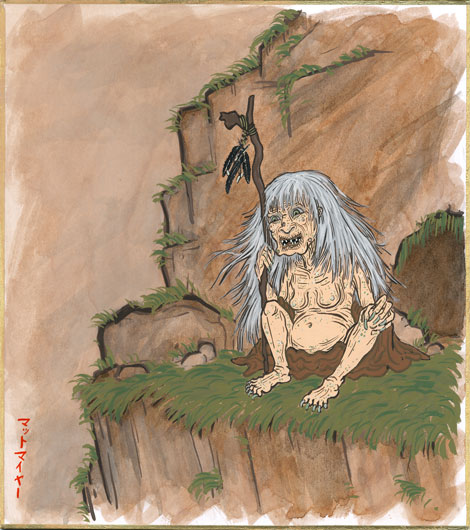
The old hags and witches of the forests, the yamauba appear to their victims as kind old ladies that offer a reprieve to their weariness such as shelter and food.
As their victims are sleeping, the yamauba will transform into their true form which is an old and demonic witch. Often, they will attempt to eat their victims by using powerful magic.
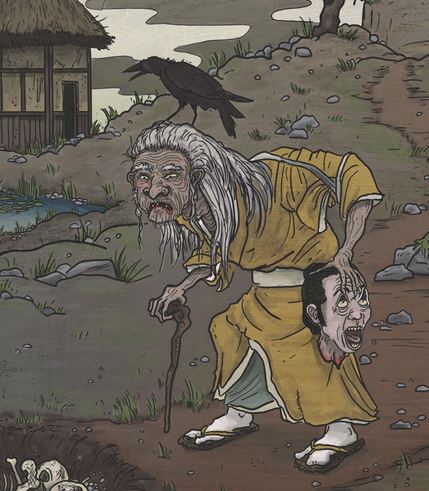
Warning tales of the yamauba spread amongst travellers who are lucky to escape, spreading caution to other people to be careful of the yamauba.
Next time you see a fragile and seemingly kind old lady hanging around the forest, perhaps it’s best to just steer clear.
And there you have it, here are the 13 creatures of Japanese urban legends and all of their backstories.
Which one do you think is your favourite?
For more lifestyle updates like this, subscribe to our Telegram channel at @confirmgood.

